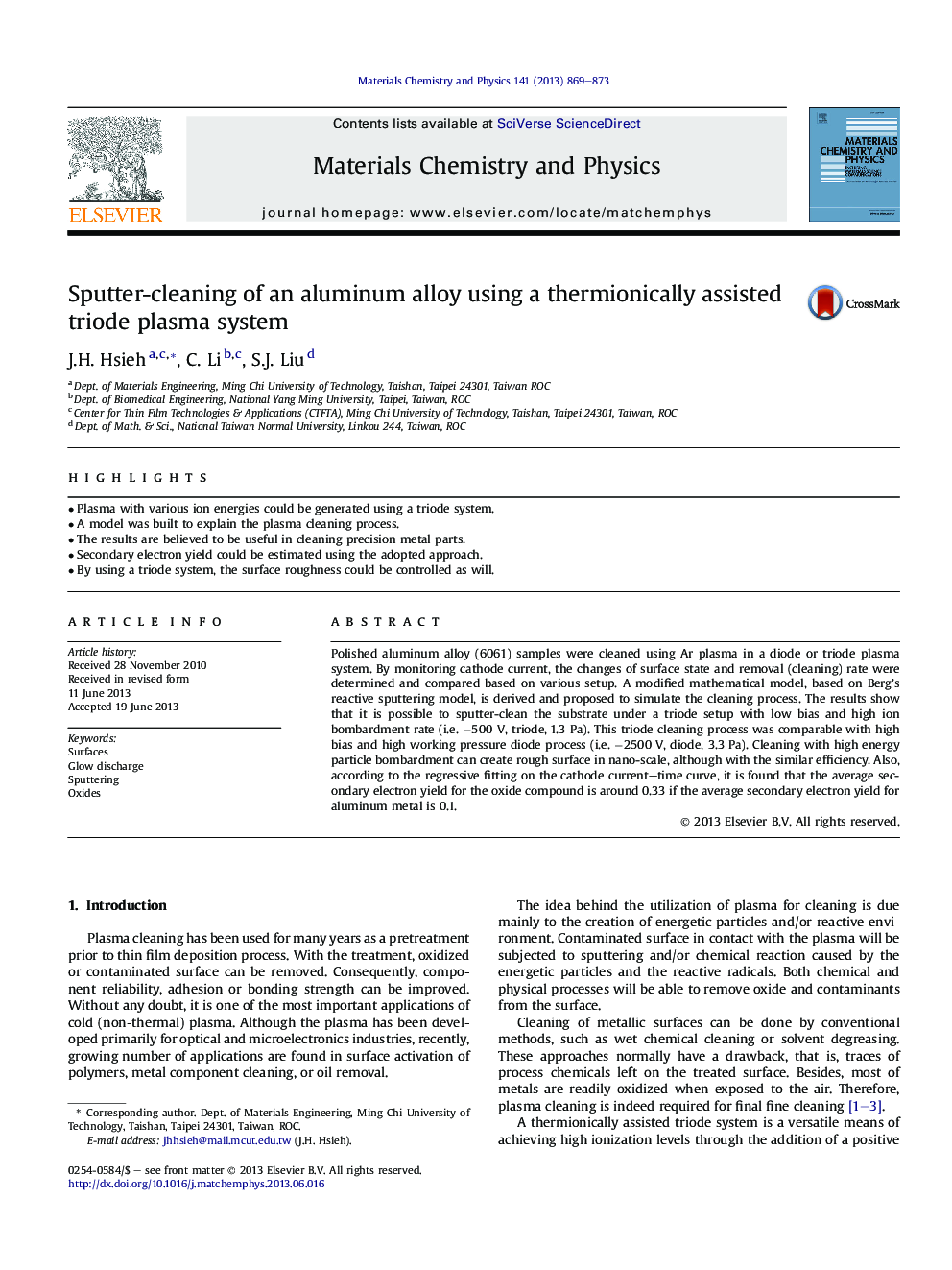| Article ID | Journal | Published Year | Pages | File Type |
|---|---|---|---|---|
| 1522553 | Materials Chemistry and Physics | 2013 | 5 Pages |
•Plasma with various ion energies could be generated using a triode system.•A model was built to explain the plasma cleaning process.•The results are believed to be useful in cleaning precision metal parts.•Secondary electron yield could be estimated using the adopted approach.•By using a triode system, the surface roughness could be controlled as will.
Polished aluminum alloy (6061) samples were cleaned using Ar plasma in a diode or triode plasma system. By monitoring cathode current, the changes of surface state and removal (cleaning) rate were determined and compared based on various setup. A modified mathematical model, based on Berg's reactive sputtering model, is derived and proposed to simulate the cleaning process. The results show that it is possible to sputter-clean the substrate under a triode setup with low bias and high ion bombardment rate (i.e. −500 V, triode, 1.3 Pa). This triode cleaning process was comparable with high bias and high working pressure diode process (i.e. −2500 V, diode, 3.3 Pa). Cleaning with high energy particle bombardment can create rough surface in nano-scale, although with the similar efficiency. Also, according to the regressive fitting on the cathode current–time curve, it is found that the average secondary electron yield for the oxide compound is around 0.33 if the average secondary electron yield for aluminum metal is 0.1.
